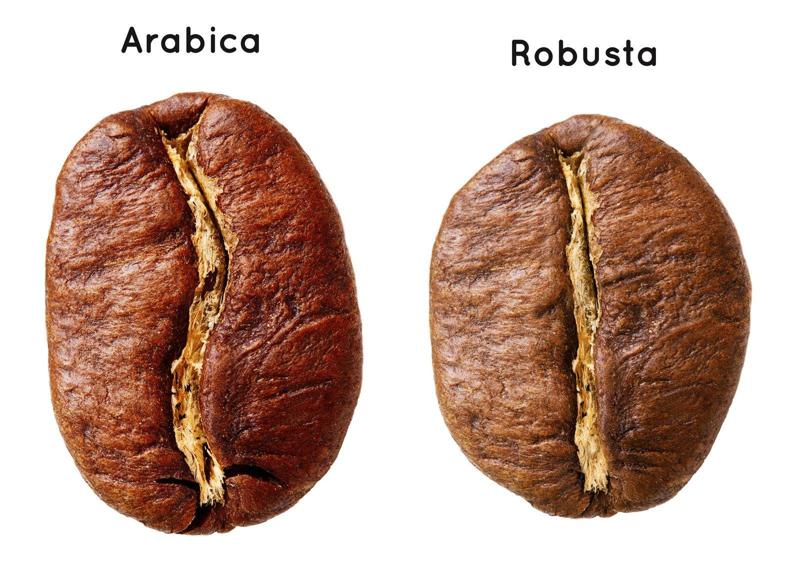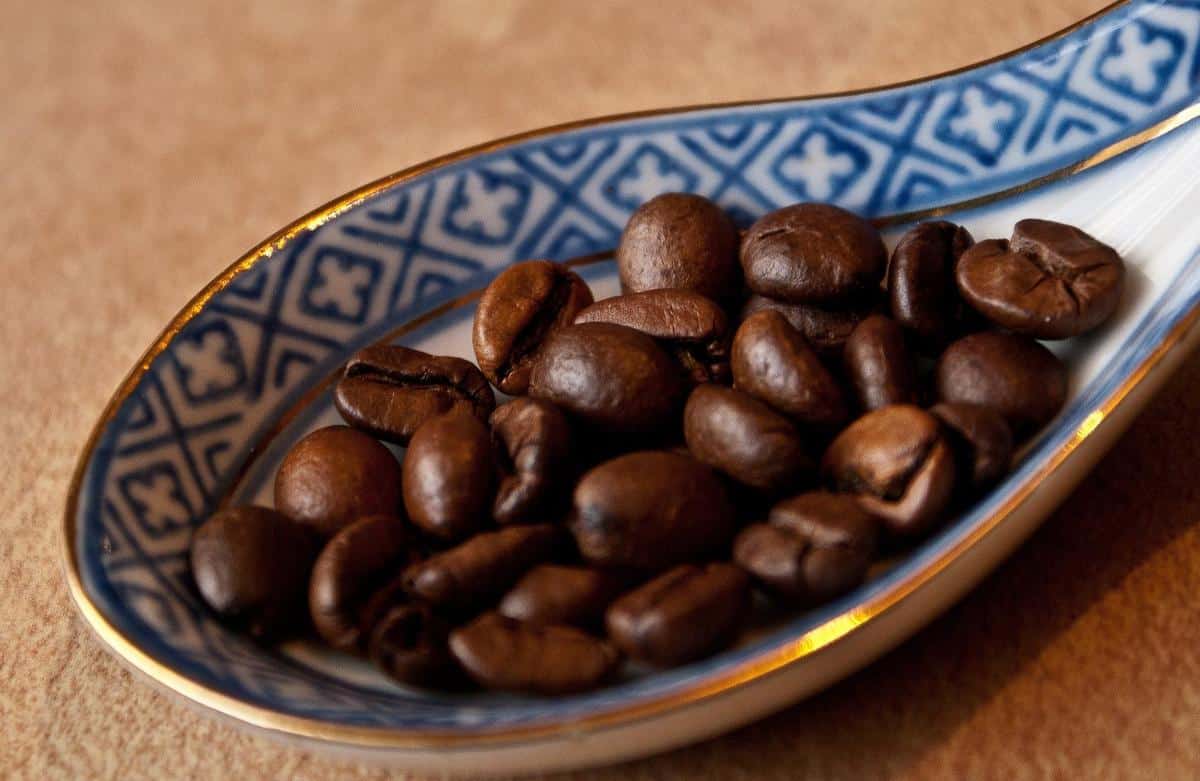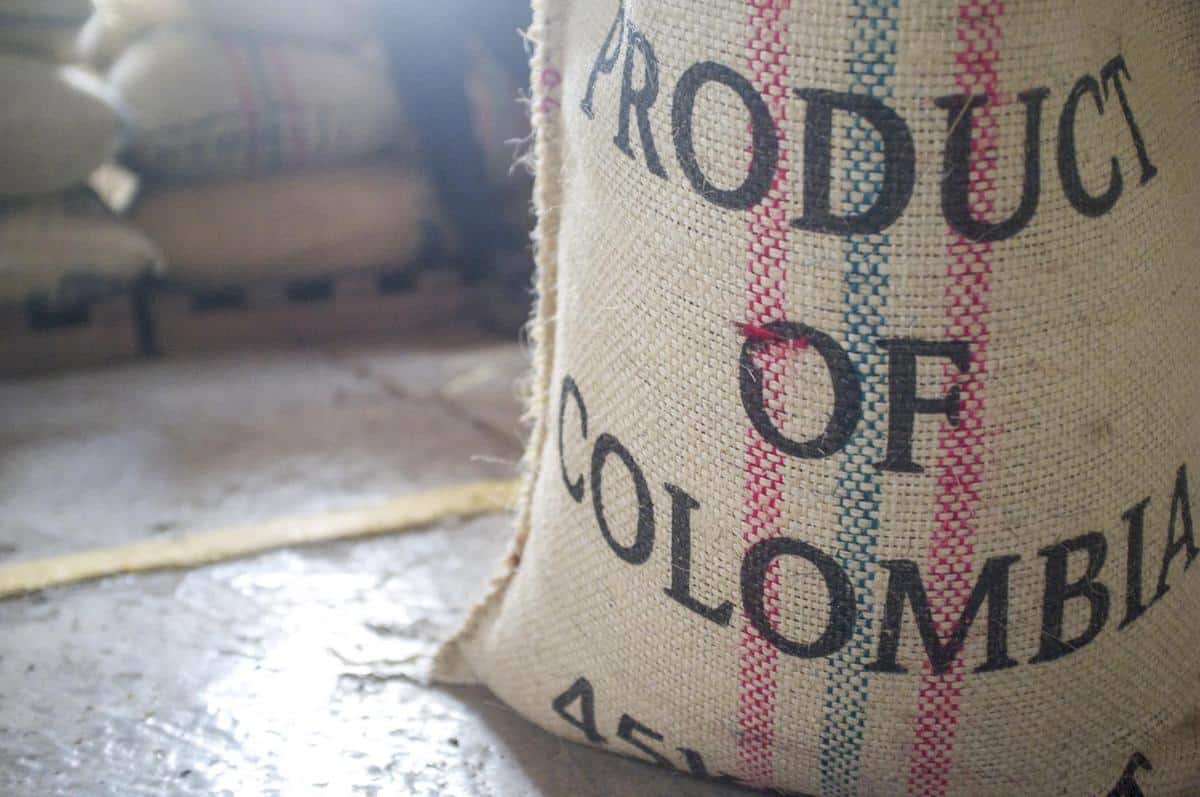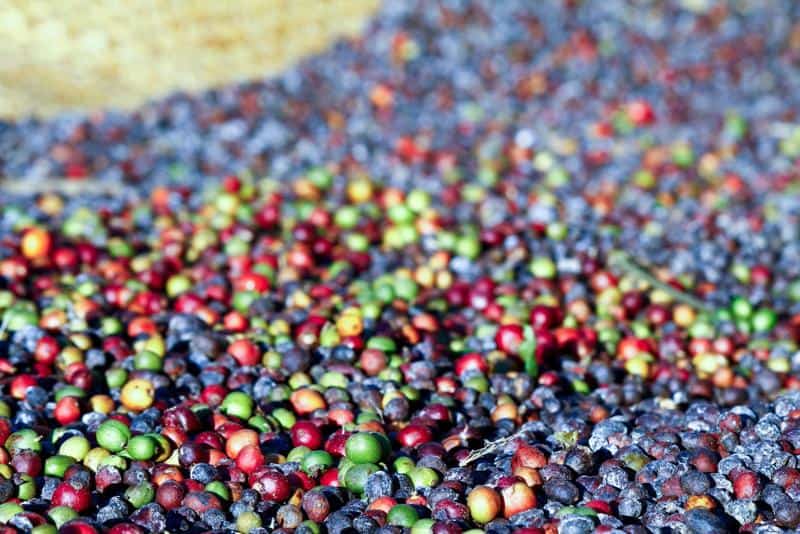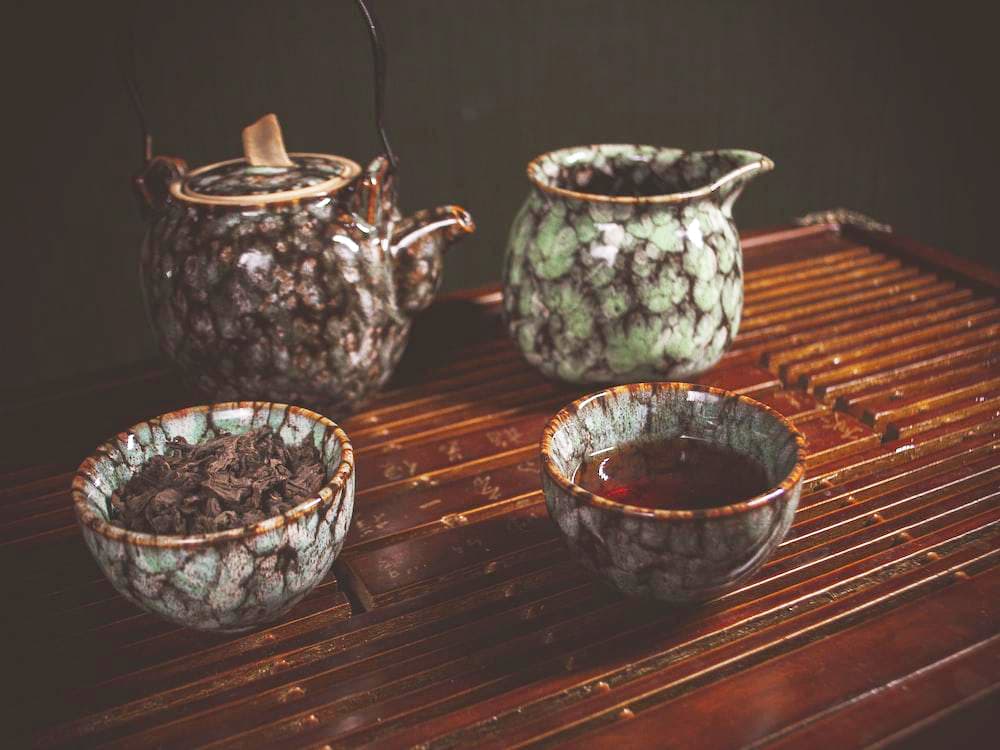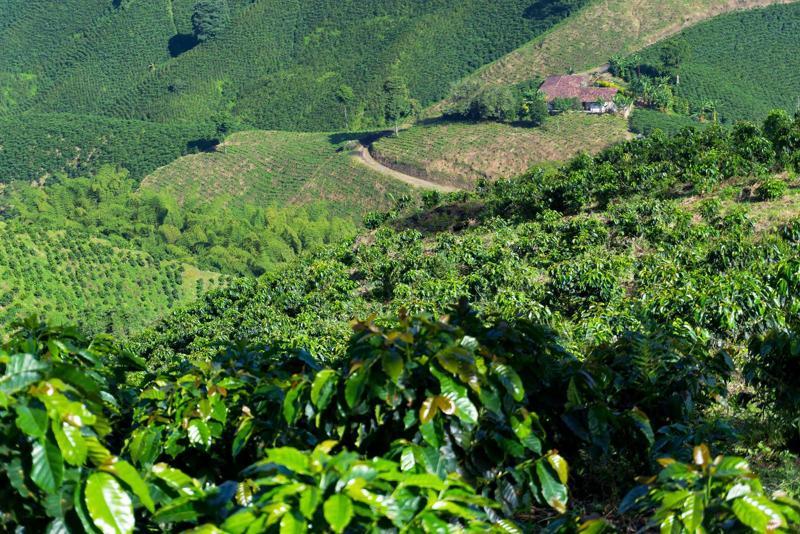Robusta beans, known for their exceptional flavor and robust characteristics, have been gaining increasing popularity in the coffee industry. With their unique flavor profiles and distinct attributes, Robusta beans have become a powerhouse of flavor that captivates coffee enthusiasts worldwide. In this article, we will explore the origins and cultivation of Robusta beans, as well as delve into their rich flavor profile and higher caffeine content compared to other coffee bean varieties.
Additionally, we will discuss the significance of Robusta beans in espresso and specialty coffee blends, as well as their traditional role in Vietnamese coffee culture. We will also explore the potential health benefits associated with consuming Robusta coffee and examine its sustainability efforts in coffee farming. Finally, we will showcase popular coffee brands that incorporate Robusta beans in their products, encouraging readers to embrace the powerhouse of flavor that is Robusta beans.
The Origins and Cultivation of Robusta Beans
Robusta beans, known for their bold and robust flavor, have been gaining popularity in the coffee industry in recent years. Understanding the origins and cultivation of Robusta beans can provide insight into why they possess such unique characteristics.
Exploring the Origins
Robusta beans, scientifically known as Coffea canephora, originated in central and western sub-Saharan Africa. They were first discovered in the 19th century and gained recognition for their resistance to diseases such as coffee leaf rust. The earliest cultivation of Robusta beans can be traced back to countries like Uganda, Democratic Republic of Congo, and Angola.
Growing Regions
While Robusta beans are grown in various regions around the world today, some countries are well-known for their production. Vietnam is currently the largest producer of Robusta coffee, accounting for more than 40% of global production. Other major producers include Brazil, Indonesia, India, and Ivory Coast. These regions offer the necessary tropical climate with ample rainfall for successful cultivation.
Cultivation Process
The cultivation process for Robusta beans differs slightly from that of other coffee bean varieties. Robusta plants thrive in lower altitudes compared to Arabica plants, usually below 800 meters above sea level. Additionally, Robusta trees tend to be larger and more productive compared to Arabica trees. They require a hot climate with temperatures ranging between 24°C and 30°C (75°F – 86°F) throughout the year.
To ensure optimal growth and development of Robusta beans, farmers must pay careful attention to soil quality and moisture levels as well. Well-drained sandy or loamy soils are typically preferred for planting Robusta coffee trees.
Overall, understanding the origins and cultivation practices associated with Robusta beans provides valuable insights into why they possess distinctive flavors that make them increasingly sought after by coffee enthusiasts around the world.
The Flavor Profile of Robusta Beans
Robusta beans are known for their distinct and bold flavor profile, which sets them apart from other coffee bean varieties such as Arabica. When it comes to taste, Robusta beans offer a unique and robust experience that appeals to many coffee lovers.
One of the distinguishing characteristics of Robusta beans is their high bitterness. This bitterness can be attributed to the higher caffeine content found in Robusta compared to Arabica beans. However, the flavor profile of Robusta goes beyond just bitterness. It also often boasts notes of chocolate and nutty undertones, giving it a rich and full-bodied taste.
In contrast to Arabica beans, which tend to have a more delicate flavor and more nuanced acidity, Robusta offers a stronger and earthier taste with less acidity. This makes Robusta beans ideal for those who prefer a bolder coffee flavor or enjoy adding milk or sugar to their coffee without compromising its taste.
Additionally, Robusta beans are known for producing an impressive crema in espresso-based drinks. The natural oils within the beans contribute to the thick layer of foam that sits atop an espresso shot, adding depth and richness to the overall flavor experience.
Overall, the flavor profile of Robusta beans showcases its strength and boldness, making it a powerhouse in terms of taste. Its unique characteristics make it an excellent choice for those seeking a coffee with intense flavors and aroma that can stand up well in various brewing methods such as espresso or blended with other coffee varieties.
The Caffeine Content in Robusta Beans
Robusta beans are not only known for their bold and intense flavors, but they also have a higher caffeine content compared to Arabica beans. This makes them a preferred choice for those seeking an extra kick of energy in their morning cup of coffee.
Caffeine is a natural stimulant found in coffee beans that can enhance focus, alertness, and overall mental performance. With approximately 2.7% caffeine content, Robusta beans contain almost double the amount of caffeine compared to Arabica beans, which typically have around 1.5%. This higher caffeine content in Robusta beans contributes to their reputation as a powerhouse of flavor.
The increased caffeine content impacts the overall flavor experience of Robusta coffee. It adds an extra layer of intensity and bitterness to its taste profile, which some coffee drinkers appreciate. The strong and robust flavor combined with the higher caffeine content creates a unique sensory experience that is cherished by coffee enthusiasts who enjoy a more invigorating cup.
It is worth noting that while the high caffeine content in Robusta beans provides an energy boost, it may not be suitable for everyone, especially those sensitive to or trying to limit their caffeine intake. Individuals who prefer a milder or less stimulating cup of coffee may opt for Arabica beans instead.
Robusta Beans in Espresso and Specialty Coffee Blends
Espresso and specialty coffee blends have become increasingly popular among coffee enthusiasts, and Robusta beans play a significant role in achieving the desired flavor profiles in these beverages. The addition of Robusta beans brings depth, complexity, and intensity to espresso blends, making them an essential component for creating a rich and full-bodied cup of coffee.
The Role of Robusta Beans in Espresso Blends
In espresso blends, Robusta beans are prized for their ability to produce a thick and creamy layer of crema-a sign of a well-prepared shot of espresso. The high caffeine content found in Robusta beans contributes to the robustness and intensity that is characteristic of espresso. Additionally, Robusta beans tend to have more bitterness and earthy flavors compared to other coffee bean varieties, which helps balance the acidity and sweetness often found in specialty coffee blends.
Enhancing Unique Flavor Profiles
Specialty coffee blends are known for their unique flavor profiles, capturing distinct characteristics from different regions around the world. By including Robusta beans in these blends, roasters can enhance specific flavor profiles such as dark chocolate notes or nutty undertones. The added complexity provided by Robusta beans creates a more layered flavor experience that is highly sought after by discerning coffee drinkers.
To achieve the desired flavor profiles in both espresso and specialty coffee blends, roasters carefully select the ratios and origins of the different types of beans used. While Arabica beans are still widely considered superior when it comes to specialty coffees, blending with Robusta allows for greater control over taste profiles.
By leveraging the unique characteristics of Robusta beans, roasters have been able to create extraordinary espresso shots and flavorful specialty coffees that cater to diverse consumer preferences. Whether it’s a velvety smooth latte or an invigorating cup of pour-over brew, including Robusta beans expands the possibilities for crafting truly exceptional coffee experiences.
The Rich Robusta Tradition in Vietnam
Robusta coffee beans have a long and rich tradition in Vietnam, making the country one of the largest producers of this coffee variety in the world. The unique brewing methods and flavor preferences in Vietnamese coffee culture have contributed to the popularity of Robusta beans in the region.
Vietnam’s history with Robusta coffee dates back to the late 19th century when French colonists introduced coffee cultivation to the region. The ideal climate and fertile soil of Vietnam’s Central Highlands provided favorable conditions for Robusta beans to thrive. Today, Vietnam is known for its strong and bold Robusta coffee, which has become a cornerstone of Vietnamese cuisine and culture.
One of the most iconic Vietnamese coffee beverages is “cà phê đá,” which translates to “iced coffee.” This popular drink is made by brewing dark roasted Robusta beans using a special drip filter called a “phin.”
The coffee slowly drips into a cup containing condensed milk, resulting in a creamy and flavorful beverage enjoyed both hot and cold. The combination of robust flavor notes from the beans and the sweetness from the condensed milk creates a unique sensory experience that has gained international recognition.
Vietnamese coffee culture is also known for its preference for intense flavors. Traditional Vietnamese coffee often has a rich body, low acidity, and prominent chocolate or nutty undertones. This distinct flavor profile can be attributed to the use of dark roasted Robusta beans, which are known for their full-bodied characteristics. Additionally, Vietnamese roasters often add ingredients such as chicory or cocoa during the roasting process to enhance these flavor profiles even further.
The Health Benefits of Robusta Beans
Robusta beans not only pack a flavorful punch, but they also offer some potential health benefits. Coffee made from Robusta beans contains a variety of antioxidants that can have positive effects on the body. These antioxidants help to neutralize harmful free radicals and reduce oxidative stress in the body, which can contribute to overall health and well-being.
One of the key health benefits associated with consuming Robusta coffee is its metabolism-boosting properties. Coffee, in general, has been found to increase metabolic rate and enhance fat burning. The higher caffeine content in Robusta beans compared to Arabica beans provides an added boost in energy levels and can help increase calorie expenditure.
In addition to the metabolism-boosting effects, Robusta coffee has been linked to potential disease prevention. Studies have shown that regular consumption of coffee may reduce the risk of certain chronic conditions such as type 2 diabetes, Parkinson’s disease, and liver disease. The antioxidants present in Robusta coffee play a role in these protective effects by reducing inflammation and promoting proper cellular function.
While moderation is always key when it comes to enjoying any food or beverage, incorporating Robusta coffee into your daily routine may provide a range of health benefits. From boosting metabolism to potentially preventing chronic diseases, this powerhouse bean offers more than just exquisite flavor. So go ahead and savor your cup of Robusta coffee knowing that you’re not only treating yourself to an indulgent taste experience but also potentially benefiting your health.
The Sustainability of Robusta Beans
Robusta coffee farming has made significant strides in sustainability efforts in recent years. Sustainability is a crucial aspect of coffee production, as it ensures the long-term viability of the industry while minimizing its environmental impact and supporting local communities. In this section, we will discuss the sustainability practices and their economic and environmental impact in Robusta coffee farming.
One of the key principles of sustainable coffee farming is promoting biodiversity. Robusta beans are often intercropped with shade trees, allowing for a more diverse ecosystem that supports various plant and animal species. This practice not only provides habitat for wildlife but also helps to maintain soil health and prevent erosion. Additionally, shade trees can enhance the flavor profile of Robusta beans by creating optimal microclimates.
Another important aspect of sustainability in Robusta coffee farming is water conservation. Many Robusta-growing regions face water scarcity, so farmers have implemented measures to minimize water usage. These include implementing efficient irrigation systems, employing rainwater harvesting techniques, and optimizing water management practices.
Furthermore, the economic impact of sustainable Robusta farming cannot be underestimated. By adopting sustainable practices, farmers are able to improve their yields and quality of production over time. This not only benefits them financially but also strengthens their resilience to climate change and market fluctuations.
| Sustainability Practice | Economic Impact | Environmental Impact |
|---|---|---|
| Intercropping with shade trees | Improves crop yield and quality | Promotes biodiversity and prevents soil erosion |
| Water conservation techniques | Saves water resources | Minimizes water usage in water-stressed regions |
| Adoption of organic farming practices | Higher premium prices for organic coffee | Reduces reliance on synthetic fertilizers and pesticides |
Robusta Beans in Popular Coffee Brands
In recent years, the popularity and demand for Robusta coffee beans have been on the rise. Many coffee brands have recognized the unique flavor profiles and characteristics that Robusta beans bring to their products. Let’s take a closer look at some popular coffee brands that utilize Robusta beans and explore the flavor profiles and unique selling points of these brands.
Brand A: Bold and Intense Flavors
Brand A is known for its bold and intense flavors, thanks to its use of Robusta beans in their coffee blends. The inclusion of Robusta beans adds depth and richness to their brews, providing a strong caffeine kick that many coffee enthusiasts enjoy. The distinct flavor notes of Brand A’s coffee include dark chocolate, nutty undertones, and a hint of bitterness. These flavors create a robust and full-bodied cup of coffee that excites the palate.
Brand B: Creamy Texture and Smooth Finish
For those seeking a creamy texture and a smooth finish in their coffee, Brand B is a go-to choice. Their secret lies in incorporating Robusta beans into their blends, which enhances the crema production during espresso extraction. This results in a velvety mouthfeel with a lingering sweetness that lingers on the taste buds long after each sip. Brand B prides itself on offering an indulgent coffee experience that satisfies even the most discerning palates.
Brand C: Unique Flavor Profiles with Cultural Influences
One particular brand has taken advantage of Robusta beans to showcase unique flavor profiles inspired by different cultures around the world. By carefully selecting high-quality Robusta beans from specific regions, Brand C has curated a range of specialty coffees that highlight the distinct flavors found in various countries such as Ethiopia, Indonesia, or Brazil. These coffees not only provide an authentic taste experience but also allow consumers to explore the diversity of coffee flavors from around the globe.
As more coffee brands recognize the potential and versatility of Robusta beans, it’s evident that these beans have become an essential ingredient in creating exceptional coffee. Whether it’s for their boldness, creamy texture, or unique flavor profiles, Robusta beans continue to contribute to the richness and complexity of many popular coffee brands. So next time you’re looking for a new coffee experience, consider exploring these brands that embrace the powerhouse of flavor found in Robusta beans.
Conclusion
In conclusion, Robusta beans have emerged as the powerhouse of flavor in the coffee industry. Their unique characteristics and distinct flavor profile make them a valuable and sought-after ingredient in coffee blends and espresso drinks. As we have explored throughout this article, Robusta beans offer a wide range of flavors, from bold and earthy to nutty and chocolatey.
The growing appreciation and demand for Robusta coffee among coffee enthusiasts is a testament to its quality and taste. Coffee lovers are increasingly embracing the flavors that Robusta beans bring to their cups, recognizing that they offer a different experience compared to other varieties such as Arabica. The higher caffeine content found in Robusta beans also offers an added appeal for those seeking an energy boost from their daily cup of joe.
It is important for coffee connoisseurs to continue exploring and appreciating the unique flavors of Robusta beans. As we delve further into the world of specialty coffees and blends, it is clear that Robusta has a rightful place among these offerings. So next time you’re looking for a rich, flavorful coffee experience, don’t hesitate to embrace the power of Robusta beans – you won’t be disappointed with the depth and complexity they bring to your morning brew.
Frequently Asked Questions
Which coffee beans are better Arabica or Robusta?
When it comes to determining which coffee beans are better, Arabica or Robusta, it ultimately depends on personal taste preferences. However, Arabica beans are generally considered to be of higher quality and are favored by many coffee enthusiasts. Arabica beans typically have a sweeter and more complex flavor profile with notes of fruit, berries, and chocolate.
They also often contain less caffeine compared to Robusta beans. The cultivation process for Arabica beans is more delicate and requires higher altitudes, making them more expensive than their Robusta counterparts.
What are Robusta beans good for?
Robusta beans serve various purposes in the coffee industry and possess qualities that make them valuable for specific uses. One noteworthy characteristic of Robusta beans is their higher caffeine content, which can be almost twice as much as Arabica beans.
This elevated caffeine level makes Robusta an excellent choice for those seeking a stronger, more robust cup of coffee or espresso with a lingering bitterness. Additionally, the higher caffeine content contributes to the crema formation in espresso drinks, enhancing the overall sensory experience.
What are the main differences between Arabica and robusta beans?
The main differences between Arabica and Robusta beans lie in their characteristics related to taste, growth conditions, price point, and caffeine content. Arabica beans are known for their superior taste profile with sweeter and more nuanced flavors compared to the bolder but less refined taste of Robusta beans.
While both types grow in various regions worldwide, Arabica thrives at higher altitudes with milder temperatures while Robusta can prosper in lower altitudes and warmer climates. In terms of price, due to its more delicate cultivation requirements and perceived premium quality, Arabica often commands a higher price in the market than Robusta.
What are Robusta beans?
Robusta beans refer to a type of coffee bean that belongs to the Coffea canephora species rather than Coffea arabica (Arabica). They account for around 25% of global coffee production and are known for their strong flavor, higher caffeine content, and greater resistance to diseases and pests.
Robusta beans are generally grown in lower altitudes with higher temperatures, making them suitable for regions where Arabica cultivation may not be as viable. They also tend to have a more straightforward taste profile with earthy and woody notes, along with a substantially higher bitterness.
Is Starbucks coffee Arabica or Robusta?
Starbucks predominantly uses Arabica coffee beans in their various beverages. In fact, the company has long prided itself on sourcing and serving high-quality Arabica coffees from different regions around the world.
This commitment to Arabica beans aligns with Starbucks’ emphasis on delivering a more refined and flavorful coffee experience to its customers. However, it is important to note that Starbucks does offer blends and limited-time products that may contain a combination of Arabica and Robusta beans or even solely Robusta beans for specific flavor profiles desired by their consumers.

